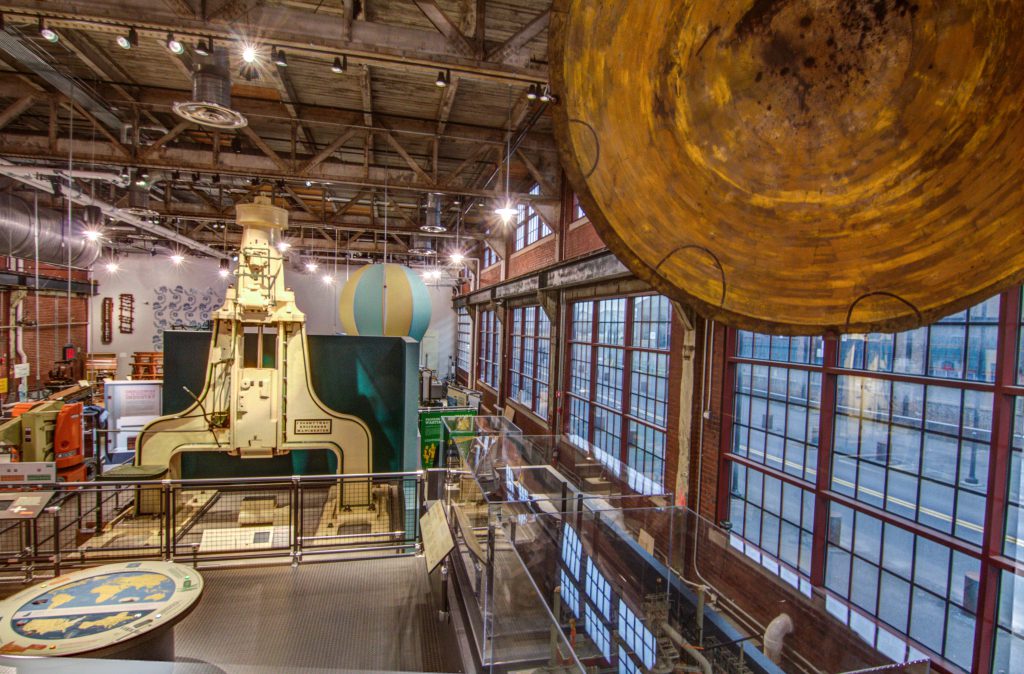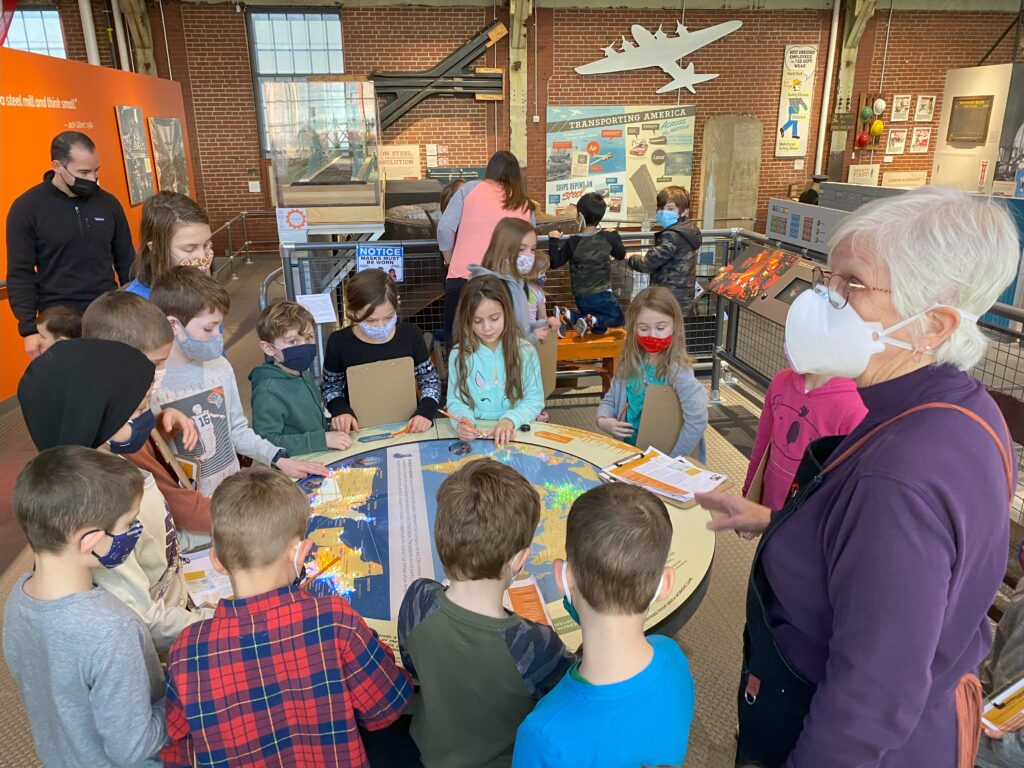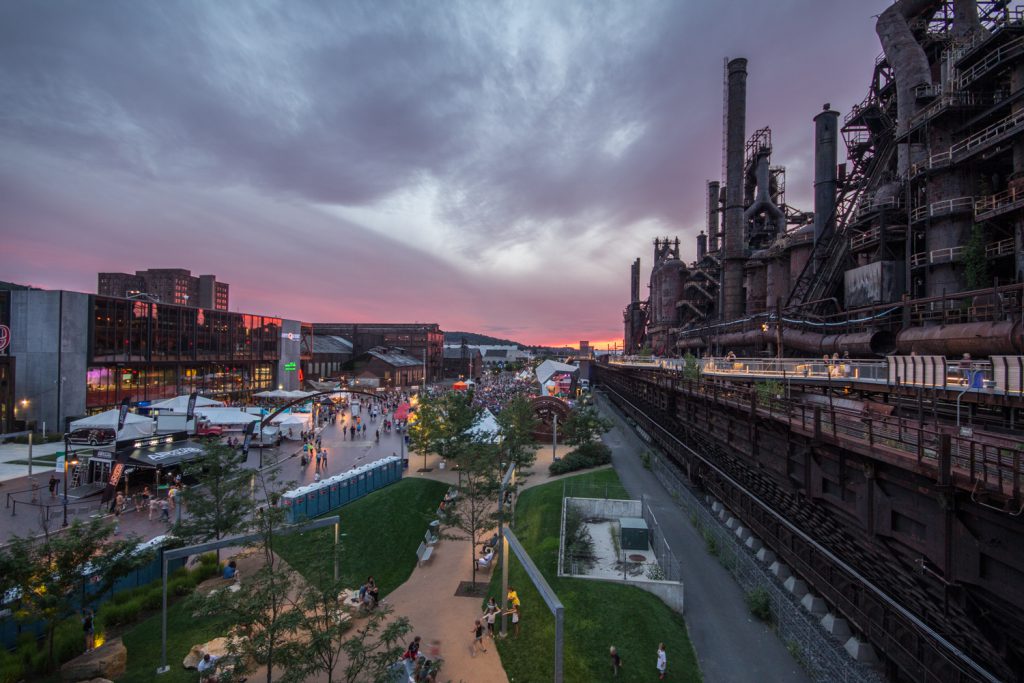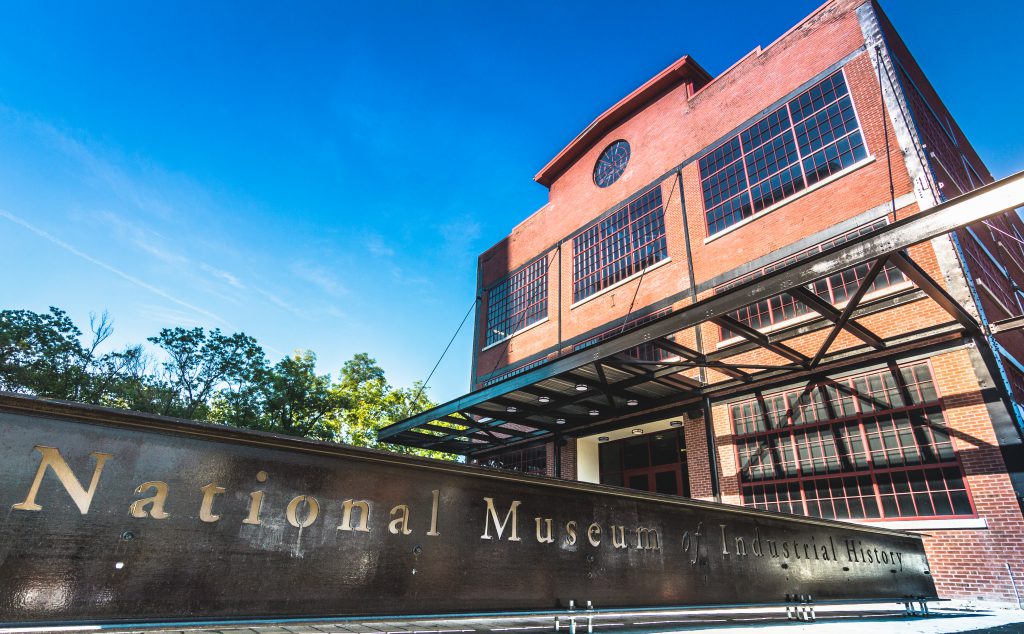 The National Museum of Industrial History, a Smithsonian Affiliate, is undergoing a multi-year expansion to double our exhibit and programmatic space, creating opportunities for additional interpretation of the steel industry. Within the framework of historical manufacturing, the Modern Steel Kiosk will highlight the steel industry of today, allowing visitors, and most importantly students, to explore and learn about careers, technology, and innovative techniques in steel manufacturing.
The National Museum of Industrial History, a Smithsonian Affiliate, is undergoing a multi-year expansion to double our exhibit and programmatic space, creating opportunities for additional interpretation of the steel industry. Within the framework of historical manufacturing, the Modern Steel Kiosk will highlight the steel industry of today, allowing visitors, and most importantly students, to explore and learn about careers, technology, and innovative techniques in steel manufacturing.
The Iron & Steel Gallery at NMIH currently interprets the early days of the industry as it transformed the American industrial landscape through the 20th century. Visitors learn about historic steelmaking processes and technology. Exhibits focus on the steelworker, engineer, researcher, and employee of the past century. The installation of the Modern Steel Educational Kiosk in this gallery will deepen the visitor experience by introducing the technologies and techniques used today.
The kiosk will feature interactive screens for visitors to engage with content about the modern steel industry, including Careers, Technology, Product, and Sustainability. Visitors from the general public as well as school groups will have the opportunity to watch videos of modern processes inside a steel mill, explore 3-D models, and investigate career pathways into the industry.
Download the full informational brochure here.
MISSION
The National Museum of Industrial History, in affiliation with the Smithsonian Institution, seeks to forge a connection between America’s industrial past and the innovations of today by inspiring the visionaries of tomorrow. In doing so, we will:
• Inspire tomorrow’s inventors and achievers
• Showcase the global contributions of America’s industrial innovators
• Educate audiences about the transformation of America from an agrarian society to an industrial giant
• Work with public, private, and non-profit partners to attract local, regional, and national visitors to explore America’s and the Lehigh Valley’s industrial roots
EDUCATION
 The Iron & Steel Gallery at NMIH interprets the early days of the industry as it transformed the American industrial landscape through the 20th century. Visitors learn about historic steelmaking processes and technology. Exhibits focus on the steelworker, engineer, researcher, and employee of the past century. Schools field trips are available for grades K-12 and led by an experienced Museum Educator. Students are guided through a curated and interactive tour of the Museum galleries. The experiences include S.T.E.A.M. hands-on activities, facilitated discussions and debates, oral histories, and workshops. We also offer digital resources that can be explored and used as complete lesson plans, supplementary information, fun interactives, and engaging activities while connecting students to NMIH. Our reach has gone international! With our interactive distance learning programs, students can zoom LIVE with a museum expert as they are virtually guided through the galleries with this fun interactive experience.
The Iron & Steel Gallery at NMIH interprets the early days of the industry as it transformed the American industrial landscape through the 20th century. Visitors learn about historic steelmaking processes and technology. Exhibits focus on the steelworker, engineer, researcher, and employee of the past century. Schools field trips are available for grades K-12 and led by an experienced Museum Educator. Students are guided through a curated and interactive tour of the Museum galleries. The experiences include S.T.E.A.M. hands-on activities, facilitated discussions and debates, oral histories, and workshops. We also offer digital resources that can be explored and used as complete lesson plans, supplementary information, fun interactives, and engaging activities while connecting students to NMIH. Our reach has gone international! With our interactive distance learning programs, students can zoom LIVE with a museum expert as they are virtually guided through the galleries with this fun interactive experience.
NMIH annually serves
3,000 school children
&
15,000 visitors
from all 50 states and 20 countries
Career Pathways
Career Pathways is a nationwide program by the U.S. Department of Education that helps students to decide what they would like to do after high school based on their abilities and interests. The program sets them up for success by pairing their K-12 education with secondary education options to set them on a career path. This kiosk supports the Career Pathways program through the S.T.E.M. tract as we help align students’ education with valuable career and technical resources to promote an important development strategy for building America’s steel industry workforce. Rewarding careers in iron and steel await for the next generation of operators, engineers, scientists, managers, and business leaders.
Why Bethlehem?
 On this site exists the earliest and best-preserved historic integrated steel facility in the world. The Bethlehem Plant’s first blast furnace began making iron in 1863 and, in 1873, the first steel was produced to be rolled into rail. By the 1880s, more iron was produced in Pennsylvania than in any other facility worldwide. Expansion came in the 1880s with the U.S. Navy’s full contract with Bethlehem to rebuild its fleet.
On this site exists the earliest and best-preserved historic integrated steel facility in the world. The Bethlehem Plant’s first blast furnace began making iron in 1863 and, in 1873, the first steel was produced to be rolled into rail. By the 1880s, more iron was produced in Pennsylvania than in any other facility worldwide. Expansion came in the 1880s with the U.S. Navy’s full contract with Bethlehem to rebuild its fleet.
Bethlehem Steel flourished during the 20th century, acquiring other companies and significantly contributing to America’s economic growth. It is estimated that 80% of the Manhattan skyline was built by the Bethlehem Beam. Much of the armaments used by the United States Armed Forces in both World Wars, were produced by Bethlehem Steel. During World War II, the company built 1,121 ships and repaired nearly 38,000 ships – far more than any other builder.
The Bethlehem Plant ceased integrated steel production in 1995, and over the next several years, closed facilities and sold off assets. However, the heart of the earliest operations in the Plant remains: Lehigh Heavy Forge still makes specialty forgings and the former Bethlehem Railroad and Intermodal facility still regionally transport material. Today, what was once the largest privately-owned brownfield in the nation is now home to a burgeoning arts and cultural campus, inspiring the next generation of innovators to reach new heights.
The National Museum of Industrial History is identified in the Northampton County Historic and Cultural Assets Plan as one of the high quality historic and cultural attractions that form the core of the Lehigh Valley’s heritage tourism industry, playing a key role in establishing an identity for the community and fostering revitalization. The Historic Moravian District of Bethlehem has submitted to be included as a UNESCO World Heritage Site, with the potential to draw even more visitors to the area.
